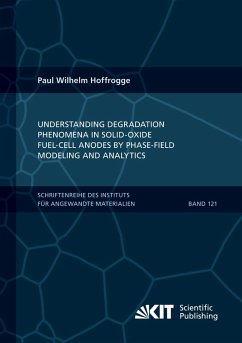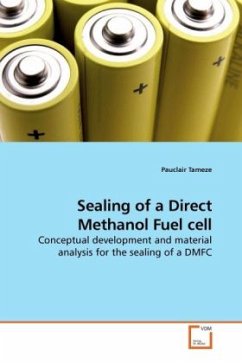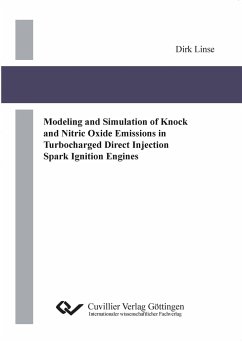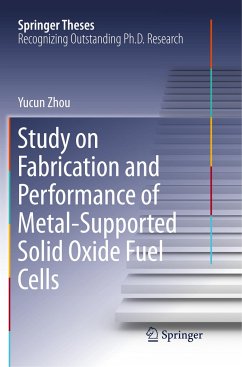
MODELING OF SOLID OXIDE FUEL CELL SYSTEM
MULTI-SCALE MODELING AND SIMULATION OF THERMAL-FLUID AND ELECTROCHEMICAL TRANSPORT IN A SOLID OXIDE FUEL CELL
Versandkostenfrei!
Versandfertig in 6-10 Tagen
45,99 €
inkl. MwSt.

PAYBACK Punkte
23 °P sammeln!
Solid oxide fuel cells (SOFCs) are expected to be widely applicable for both small and large-scale power generation systems. The reason is that the SOFC is simple, highly efficient, tolerant to impurities, and can at least partially internally reform hydrocarbon fuels. A multi-physics, multi-scale model structure is proposed by integrating three submodels, i.e., a macro-continuum model, a micro-scale model (random walk model) and an atomistic-level model. This multi-scale model has the capability of handling transport mechanisms on different length scales at the same time. The coarsest macro-c...
Solid oxide fuel cells (SOFCs) are expected to be widely applicable for both small and large-scale power generation systems. The reason is that the SOFC is simple, highly efficient, tolerant to impurities, and can at least partially internally reform hydrocarbon fuels. A multi-physics, multi-scale model structure is proposed by integrating three submodels, i.e., a macro-continuum model, a micro-scale model (random walk model) and an atomistic-level model. This multi-scale model has the capability of handling transport mechanisms on different length scales at the same time. The coarsest macro-continuum model is first proposed to simulate all energy transport processes in an electrolyte-/anode-supported SOFC. Then a novel micro-level model (random walk model) is developed to investigate the electrochemical performance in a composite electrode. Finally, a multi-scale model by combining the developed macro-level model and micro-level model is proposed for a lower temperature SOFC. Based on this multi-scale model, the dependence of electrochemical performance on the global parameters and micro-structures is assessed for the entire fuel cell stack.












